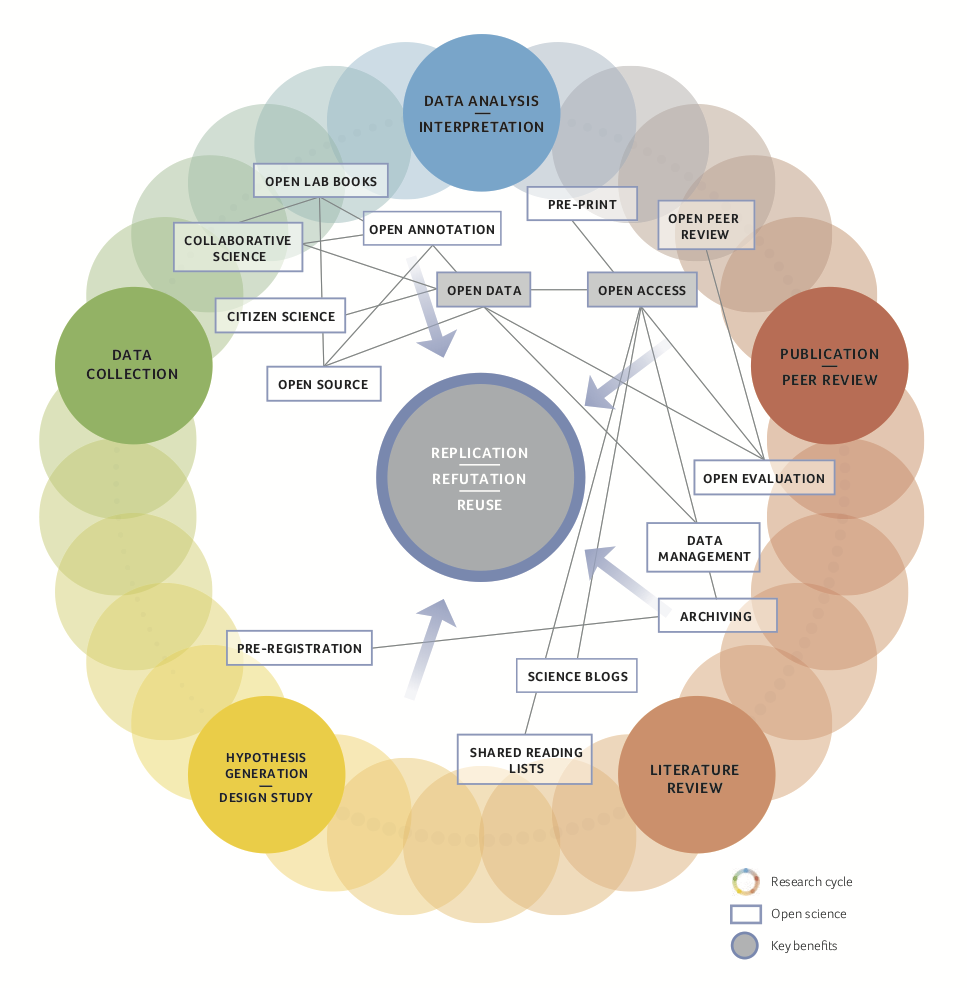- Leave a review
- Claim listing
- Bookmark
- Share
- Report
- prev
- next
- Tuesday, May 7, 2019 @ 12:20 am
Research funded by the public should be, as far as possible, publicly accessible and free of charge. The Swiss National Science Foundation (SNSF) is committed to the global project of open science.

Florian Fisch
Science Editor Swiss National Science Foundation
Access, reproducibility and speed
It was a shock back in 2011, when two pharmaceutical companies published that they were unable to replicate biomedical studies. Only in fewer than half of the cases, were the results consistent with the original publication. The Reproducibility Project: Cancer Biology has since tried to replicate high profile studies but with mixed success. Up until the end of 2018, only five out of twelve replication studies could reproduce important parts of the original publication. The lack of reproducibility in research has since become a major discussion topic in the scientific community, and in other disciplines such as psychology.
This has led to calls for more open science and the SNSF has implemented its own policies (see box). Open science means that the detailed methods as well as the raw data, should be accessible so that everybody is able to judge the results based on the full knowledge of the original experiments. Open research data should help the community reach higher standards.
Not only that, the sharing of all the information on experiments should also help to speed up innovation. No time wasted searching for the correct conditions, materials and analysis protocol: Everything is available online. No need to contact researchers of the original paper to obtain more information, hoping that they respond promptly (if at all!). New methods of text and data mining can be used: Algorithms analyse the research data of many studies in parallel.
Open science is also more trustworthy. This is advantageous at a time when influential political interest groups and certain media are increasingly questioning scientific knowledge. Even within the scientific community, the transparency can further scrutiny by colleagues and therefore results in a more thought-through research process from the beginning.
A second pillar of open science is to ensure open access (meaning free and digital) to scientific publications – especially for research that has been funded with taxpayers’ money. Even if only a few non-science people are ever going to read scientific articles, they should have the right to read the results of their investment if they wish. Public accountability is an important factor for convincing politicians to invest more public funds in education and research.
If publications are not freely accessible, the public pays twice for scientific results. First, they fund the research project and then they are charged to see the results. In addition, the price of a single article is usually prohibitively high. For scientists in rich research institutions of wealthy countries, this is usually not a barrier because their library has already paid the subscription fee. In poorer research institutions of low-income countries, the prices result in a large part of the scientific community being excluded from fresh results.
Transparency can go much further than open research data and open access to publications. Open lab books ensure that all research activities become transparent. Open source software and hardware helps replication efforts while open peer review could ensure more constructive feedback. Pre-registration discloses changes of end point while open grant review could yield more feedback and much more (see graphic). Such changes cannot be implemented through new policies alone. They require a huge cultural shift within the science community. Where the advantages are big enough, the SNSF wants to move forward together with the community of researchers.
References:
- Horizons 110, September 2016, “Open up, science!”
- SNSF open science policy
The SNF sets timeframes Open access: By 2020 all publications from research projects financed by the SNSF will be published in a freely accessible form, including books. In 2018 this was already the case for half of the articles and books. There are two possibilities: The gold road consists in publishing directly in an open access journal or book; the SNSF covers the cost for publishing. The green road to open access allows researchers to publish their article behind a paywall first, then they have to place them in a public database after six months (twelve for books). The strategy goes hand in hand with Swiss and European policy. Swiss higher education institutions decided that all publicly funded publications must be freely accessible by 2024. The SNSF also supports the ‘European Plan S’ but has not yet signed up, continuing to pursue its own ‘Open Access Policy 2020’. The SNSF wants to walk the path to open access together with the community. Open research data: The first step is for scientist to plan how they will organise their data and make it accessible to everyone: a data management plan. This facilitates handling, publishing and archiving the research results in a useful way. Since 2017, researchers have to include a data management plan in their funding application for most of the SNSF schemes. The SNSF pays up to CHF 10,000 for the additional work required. The first experiences have been generally positive. Constant dialogue: The SNSF is discussing with researchers and coordinating with international funding institutions, Swiss higher education institutions, the State Secretariat for Education, Research and Innovation and Swiss politicians to further the transparency of science.

Source: Daniel Saraga in Horizons 110, September 2016
Funding excellent research The Swiss National Science Foundation (SNSF) is the most important agency promoting scientific research in Switzerland. As mandated by the Swiss Federal Government, the SNSF supports research in all scientific disciplines, from philosophy and biology to the nanosciences and medicine. The best applicants are funded to the tune of over CHF 900 million each year. The SNSF supports over 6,000 projects involving more than 16,000 researchers annually. www.snsf.ch